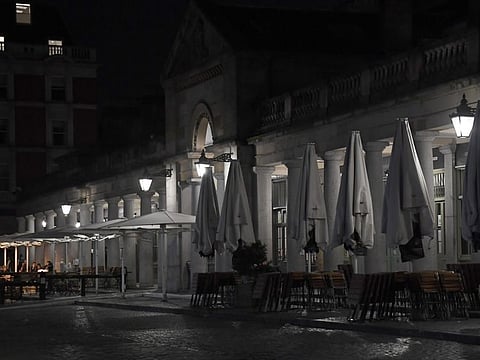Lockdown 2.0: Europe enters a long, uncertain winter
England becomes the latest major Western nation to face 4-weeks of complete restrictions

After a summer of hope, Europe looks set for a tragic winter. The dream of keeping the pandemic in check with limited sacrifices is gone. Governments are readying themselves for a new round of tough containment measures.
England faces a month of nationwide lockdown restrictions from Thursday after Boris Johnson detailed new plans in a bid to combat coronavirus. Pubs, restaurants, gyms and non-essential shops will close, but schools, colleges and universities can stay open.
Ireland paved the way a week and a half ago, imposing a national lockdown while keeping schools and essential stores open. France has similarly ordered a shutdown, just a few months after president Emmanuel Macron categorically ruled one out. In Germany, chancellor Angela Merkel has spearheaded a partial lockdown for the month of November, one that will put a stop to leisure activities. Italy has imposed a 6pm curfew for bars and restaurants but could opt for more draconian rules.
Curbs on personal freedom
As new curbs on personal freedom loom, it’s worth asking: Are Europeansgoing to accept them as they did during the first wave of the virus? From Italy to Spain, many are already taking to the streets to protest the impact of restrictions on their financial security. Politicians must find ways to address their concerns or risk a collapse of social cohesion.
As I argued in August, more lockdowns were never off the table. Although leaders vowed to tackle a second wave through tracking, tracing and “smart,” localised lockdowns, the rising number of deaths and hospitalisation is giving them no choice but to impose stricter measures. Even Sweden, which opted for a relatively light-touch strategy during the first wave, is now enforcing more restrictions, at least in some areas.
The current approach across Europe differs, however, from that taken during the spring. Governments appear desperate to keep open as much of their economies as possible, as they fear a spike in bankruptcies, unemployment and ever larger budget deficits. Spain and Italy are resisting the blanket bans on non-essential activities they had previously adopted. Politicians also want to keep schools open, even though this likely contributes to propagating contagion. Italy has reverted to distant learning for high school kids, but elsewhere on the continent we are not seeing the same widespread school closures we had in the first half of 2020.
Still, any lockdown is going to require collaboration from the population. Most European countries benefited from exceptional levels of compliance to stay-at-home orders in the spring. Now, as protests in cities such as Rome and Barcelona show, people’s frustration and rage are growing.
To some extent, this is the natural consequence of earlier policies. Generalised lockdowns were always an imperfect long-term containment strategy for the virus, as the economic shock hits citizens hard. It also hits the same people again and again, from waiters to ballet dancers.
A wave of discontent
But European governments have themselves to blame for this wave of discontent. During the spring, they could be excused for being caught off guard. This line of defence no longer holds. As Europeans continue to face shortages of tests and hospital beds, many are asking what exactly politicians did to prepare for the colder season. There is also anger that businesses were forced to invest in sanitisers and other health precautions only to then be shut down again. Policymakers should have been more honest about the long-term uncertainty linked to the pandemic, rather than raising expectations of a swift return to normality.
Leaders must now do a better job of bringing citizens on board with new restrictions. They must ensure that measures are proportionate and based on scientific advice, and that the public sector does its part to limit the spread of contagion “- for example by reducing crowds on public transport. They must do better at communicating the thinking behind their decisions. Finally, they must put together adequate financial support and get it swiftly to those in need. During the first wave, countries such as Germany managed this far more efficiently than others such as Italy.
Europe is heading into winter with a scared population. The challenge will be finding a way to fight the pandemic.
Ferdinando Giugliano writes columns on European economics
Bloomberg
Sign up for the Daily Briefing
Get the latest news and updates straight to your inbox







